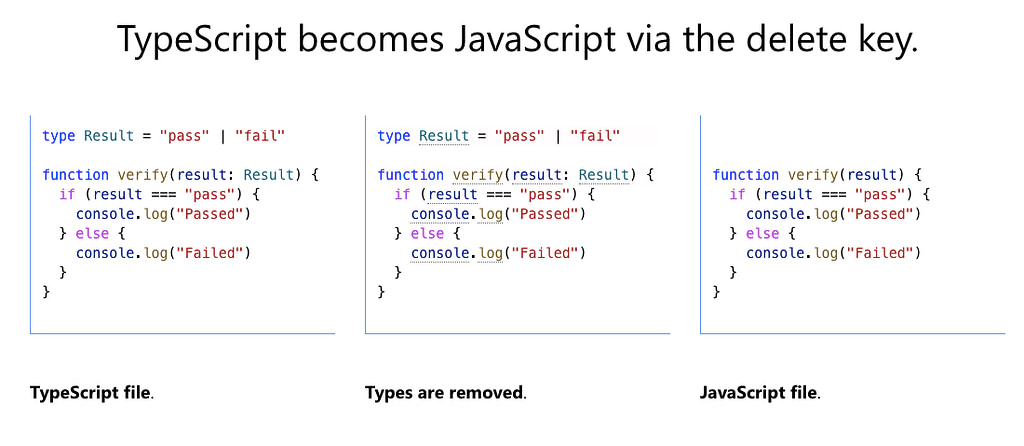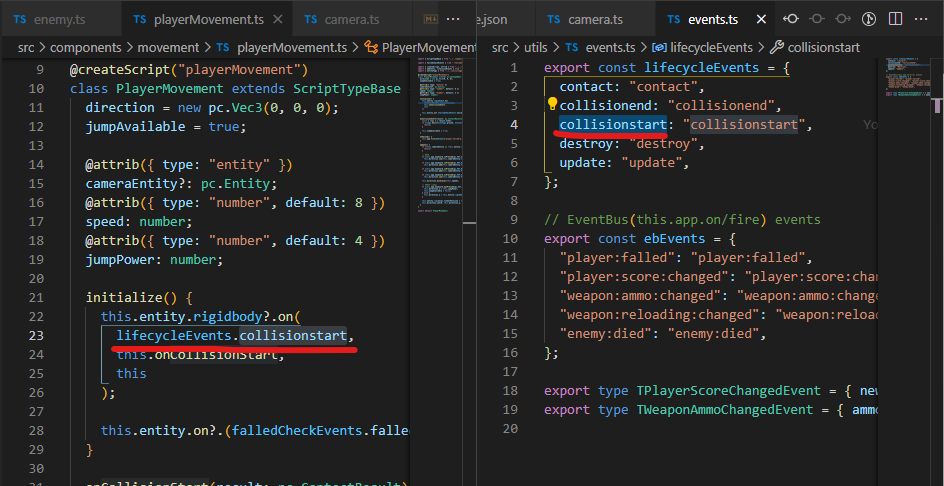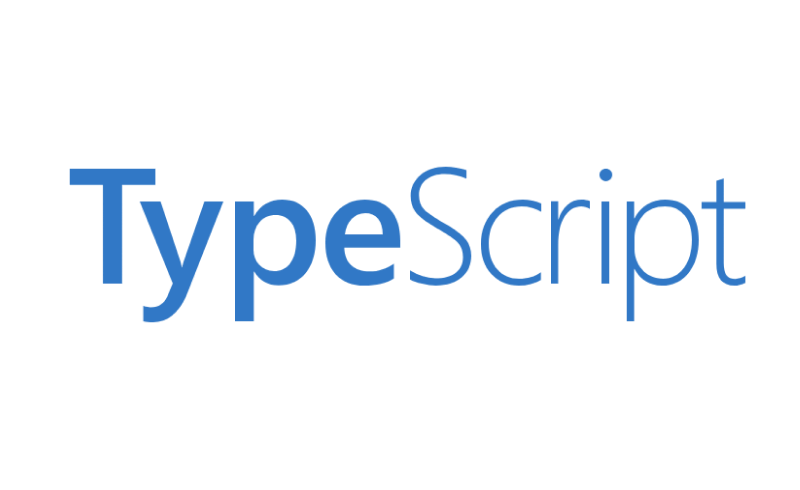A Deep Dive into the World of TypeScript Decorators
In the ever-evolving landscape of modern web development, TypeScript has established itself as an indispensable tool for building robust, scalable, and maintainable applications. While its static typing system is the star of the show, TypeScript offers a host of advanced features that empower developers to write cleaner and more declarative code. Among the most powerful of these features are TypeScript Decorators.
Decorators provide a way to add annotations and a meta-programming syntax for class declarations and members. They are a stage 3 proposal for JavaScript, but TypeScript has supported them as an experimental feature for years. This has led to their widespread adoption in popular frameworks like TypeScript Angular for dependency injection and component definition, and TypeScript NestJS for creating declarative API endpoints. Understanding decorators is no longer just for framework authors; it’s a key skill for any advanced TypeScript developer looking to write more expressive and reusable code. This comprehensive guide will take you from the fundamentals of decorators to advanced, practical patterns you can apply in your own TypeScript Projects.
Section 1: Core Concepts and Getting Started
At their core, decorators are simply functions that are prefixed with an @ symbol and attached to classes, methods, properties, or parameters. These functions are executed at design time (when the code is being defined), not at runtime, and receive information about the decorated item as arguments. They can then observe, modify, or even replace the definition of the decorated item.
Enabling Decorators in Your Project
Because decorators are still an experimental feature in TypeScript, you must explicitly enable them in your project’s tsconfig.json file. You need to set the experimentalDecorators compiler option to true.
{
"compilerOptions": {
"target": "ES2022",
"module": "commonjs",
"experimentalDecorators": true,
"emitDecoratorMetadata": true, // Often used with decorators for metadata reflection
"strict": true
}
}The emitDecoratorMetadata option is also crucial for more advanced scenarios, especially those involving dependency injection and runtime type information, often used in conjunction with the reflect-metadata library.
Types of Decorators
TypeScript defines five places where decorators can be applied:
- Class Decorators: Applied to a class constructor and can be used to observe, modify, or replace a class definition.
- Method Decorators: Applied to a method on a class and can observe, modify, or replace a method definition.
- Property Decorators: Applied to a property on a class.
- Accessor Decorators: Applied to the get/set accessors of a class property.
- Parameter Decorators: Applied to a parameter in a method or constructor.
Decorator Factories
A decorator factory is simply a function that returns the decorator function. This pattern allows you to configure the decorator with parameters. For example, instead of @log, you could have @log("USER_SERVICE") to provide context to the logger.

A Simple Class Decorator Example
Let’s create a classic example: a @sealed decorator. This decorator will prevent a class from being extended by using Object.seal on both the constructor and its prototype. This is a great starting point for understanding how TypeScript Classes and decorators interact.
// A simple Class Decorator
function sealed(constructor: Function) {
console.log(`Sealing the constructor for ${constructor.name}`);
Object.seal(constructor);
Object.seal(constructor.prototype);
}
@sealed
class BugReport {
type = "report";
title: string;
constructor(t: string) {
this.title = t;
}
}
const bug = new BugReport("Memory leak on save");
console.log(bug);
// The following would throw an error at runtime because the class is sealed
// class CriticalBugReport extends BugReport {
// severity: number = 5;
// }When this code is run, you’ll see “Sealing the constructor for BugReport” logged to the console, demonstrating that the decorator function executed as soon as the class was defined.
Section 2: Practical Implementation with Real-World Scenarios
While sealing a class is a good academic example, the true power of decorators shines in more practical, everyday coding challenges. Let’s explore how decorators can solve common problems in a clean and reusable way.
Method Decorators for Logging and Performance Monitoring
One of the most common use cases for method decorators is Aspect-Oriented Programming (AOP), where you add cross-cutting concerns like logging, caching, or authentication without cluttering your core business logic. Let’s create a @log decorator that logs method calls, their arguments, and their execution time.
function log(target: any, propertyKey: string, descriptor: PropertyDescriptor) {
const originalMethod = descriptor.value; // The original method
// Redefine the method using a new function
descriptor.value = function (...args: any[]) {
console.log(`Calling "${propertyKey}" with arguments:`, args);
const startTime = performance.now();
// Call the original method
const result = originalMethod.apply(this, args);
const endTime = performance.now();
console.log(`Method "${propertyKey}" executed in ${(endTime - startTime).toFixed(2)}ms`);
// Return the result of the original method
return result;
};
return descriptor;
}
class Calculator {
@log
add(a: number, b: number): number {
// Simulate a delay
for(let i = 0; i < 10000000; i++) {}
return a + b;
}
}
const calc = new Calculator();
calc.add(5, 7);
// Console Output:
// Calling "add" with arguments: [ 5, 7 ]
// Method "add" executed in 12.34ms (time will vary)In this example, the @log decorator receives three arguments: target (the class prototype), propertyKey (the method name), and descriptor (an object describing the property). We wrap the original method (descriptor.value) to add our logging and performance timing logic before and after its execution. This is a powerful pattern for TypeScript Debugging and performance analysis.
Property Decorators for Validation
Property decorators can be used to run validation logic or transform data. Let’s create a @minMax decorator that ensures a numeric property stays within a specified range. This requires a bit more complexity, as we need to replace the property with a getter and a setter to intercept access.
function minMax(min: number, max: number) {
return function(target: any, propertyKey: string) {
let value: number = target[propertyKey];
const getter = () => value;
const setter = (newValue: number) => {
if (newValue < min) {
console.warn(`Value for ${propertyKey} is too low. Setting to minimum: ${min}`);
value = min;
} else if (newValue > max) {
console.warn(`Value for ${propertyKey} is too high. Setting to maximum: ${max}`);
value = max;
} else {
value = newValue;
}
};
Object.defineProperty(target, propertyKey, {
get: getter,
set: setter,
enumerable: true,
configurable: true,
});
};
}
class Player {
@minMax(0, 100)
health: number = 100;
}
const player = new Player();
console.log(`Initial health: ${player.health}`); // 100
player.health = 150; // Triggers the setter's max-value logic
console.log(`Health after taking damage: ${player.health}`); // 100
player.health = -20; // Triggers the setter's min-value logic
console.log(`Health after healing: ${player.health}`); // 0
player.health = 75;
console.log(`Final health: ${player.health}`); // 75Here, our @minMax(0, 100) decorator is a factory that captures the min/max values. It then replaces the health property with a new property definition that includes our custom validation logic in the setter. This is a great example of how TypeScript Patterns can enforce business rules at the data level.
Section 3: Advanced Decorators for Async, DOM, and API Logic
Decorators truly excel when handling complex, asynchronous, or boilerplate-heavy tasks. Let’s explore some advanced use cases that are common in modern front-end and back-end development.

Handling Asynchronous Operations with a Debounce Decorator
In front-end development, especially with frameworks like TypeScript React or TypeScript Vue, you often need to debounce user input to prevent excessive API calls or expensive computations. A decorator is a perfect way to encapsulate this logic.
function debounce(delay: number) {
return function (target: any, propertyKey: string, descriptor: PropertyDescriptor) {
const originalMethod = descriptor.value;
let timeoutId: any;
descriptor.value = function (...args: any[]) {
clearTimeout(timeoutId);
timeoutId = setTimeout(() => {
originalMethod.apply(this, args);
}, delay);
};
return descriptor;
};
}
class SearchComponent {
// Simulate an input element
inputElement: { value: string } = { value: '' };
constructor() {
// Simulate a DOM event listener
// In a real app, this would be: this.inputElement.addEventListener('input', this.onSearch);
}
@debounce(500) // Debounce by 500ms
onSearch() {
console.log(`Performing API search for: "${this.inputElement.value}"`);
// In a real app, you would make an API call here.
}
// Simulate user typing quickly
simulateTyping(text: string) {
for (const char of text) {
this.inputElement.value += char;
this.onSearch();
}
}
}
const search = new SearchComponent();
search.simulateTyping("typescript decorators");
// Console Output (after 500ms delay):
// Performing API search for: "typescript decorators"The @debounce decorator wraps the onSearch method. No matter how many times onSearch is called in quick succession, the underlying API call logic will only execute once, 500ms after the last call. This is an elegant way to handle Async TypeScript logic related to DOM events.
Creating Declarative API Routes in Node.js
Inspired by frameworks like TypeScript NestJS, we can use decorators to define API routes in a declarative and organized manner. This requires the reflect-metadata library to store and retrieve metadata about our routes.
First, install the necessary packages: npm install express reflect-metadata and their types npm install @types/express --save-dev.
import 'reflect-metadata';
import express, { Request, Response } from 'express';
// A simple decorator factory for a GET route
const Get = (path: string): MethodDecorator => {
return (target, propertyKey, descriptor) => {
// Store the path metadata on the method
Reflect.defineMetadata('path', path, target, propertyKey);
Reflect.defineMetadata('method', 'get', target, propertyKey);
};
};
// A controller class
class UserController {
@Get('/users/:id')
getUser(req: Request, res: Response) {
const userId = req.params.id;
res.json({ id: userId, name: `User ${userId}` });
}
@Get('/users')
getAllUsers(req: Request, res: Response) {
res.json([{ id: 1, name: 'User 1' }, { id: 2, name: 'User 2' }]);
}
}
// Function to register controllers with an Express app
function registerControllers(app: express.Application, controllers: any[]) {
controllers.forEach(controllerClass => {
const instance = new controllerClass();
const prototype = Object.getPrototypeOf(instance);
// Get all method names of the controller
const methodNames = Object.getOwnPropertyNames(prototype)
.filter(name => name !== 'constructor');
methodNames.forEach(methodName => {
const path = Reflect.getMetadata('path', prototype, methodName);
const method = Reflect.getMetadata('method', prototype, methodName);
if (path && method) {
const handler = instance[methodName].bind(instance);
console.log(`Registering route: ${method.toUpperCase()} ${path}`);
app[method](path, handler);
}
});
});
}
const app = express();
registerControllers(app, [UserController]);
app.listen(3000, () => {
console.log('Server is running on http://localhost:3000');
});In this advanced example, our @Get decorator doesn’t modify the method; it simply attaches metadata (the path and HTTP method) to it using Reflect.defineMetadata. A separate registerControllers function then iterates through our controller, reflects on its methods, retrieves this metadata, and dynamically registers the routes with an TypeScript Express application. This powerful pattern is the foundation of many modern back-end frameworks.
Section 4: Best Practices, Pitfalls, and Optimization
While decorators are incredibly powerful, they should be used judiciously. Adhering to best practices will ensure your code remains readable, maintainable, and performant.
Best Practices for Using Decorators
- Keep Them Focused: A decorator should have a single, clear responsibility (e.g., logging, validation, route definition). Avoid creating monolithic decorators that do too many things.
- Use Factories for Configuration: Whenever a decorator needs parameters, use a decorator factory. This makes them far more flexible and reusable.
- Document Everything: Since decorators can add “magic” behavior, it’s crucial to document what each decorator does, what parameters it accepts, and how it affects the decorated target.
- Understand Execution Order: When multiple decorators are applied to a single item, their factories are evaluated top-to-bottom, but the decorator functions themselves execute bottom-to-top. Understanding this is key to avoiding unexpected behavior.
Common Pitfalls to Avoid
- Forgetting
tsconfig.jsonFlags: The most common error is forgetting to enableexperimentalDecoratorsin your TSConfig file. - The
thisContext: Inside a decorator function,thisdoes not refer to the class instance. If you need to access the instance context within a modified method, ensure you use.apply(this, args)or arrow functions correctly to preserve the context. - Overuse and Abstraction Leaks: Don’t use decorators for simple logic that could be a plain function call. Overusing them can make code harder to trace and debug. The logic inside a decorator should be generic and not tied to the specific implementation of the class it’s decorating.
Conclusion: The Future of Declarative Programming in TypeScript
TypeScript Decorators are a transformative feature that enables developers to write more declarative, reusable, and maintainable code. We’ve journeyed from the basic concepts of what decorators are and how to enable them, to practical, real-world applications like logging, validation, debouncing, and even building framework-level API routing. By abstracting away boilerplate and cross-cutting concerns, decorators allow you to focus on the core business logic of your application.
As the decorator proposal continues to advance towards standardization in ECMAScript, their importance in both the TypeScript and wider JavaScript ecosystems will only grow. Whether you’re working with TypeScript Node.js, building a front-end with TypeScript React, or architecting complex systems with TypeScript Angular or TypeScript NestJS, mastering decorators is a crucial step towards becoming a more effective and proficient developer. Start by identifying repetitive patterns in your own projects and consider how a decorator could provide a cleaner, more elegant solution.




